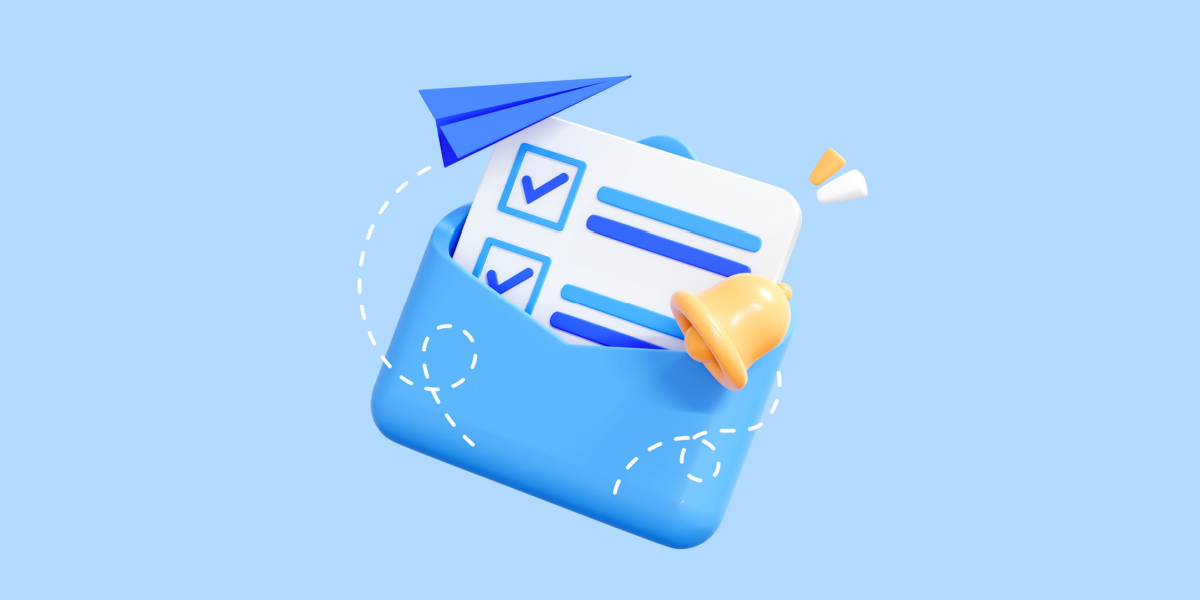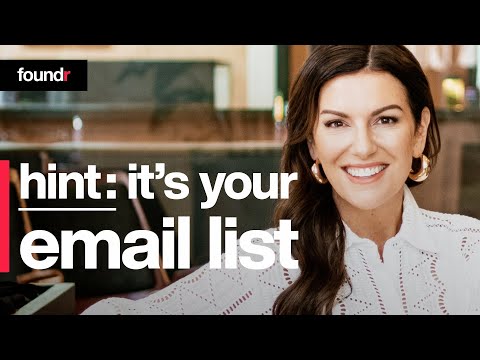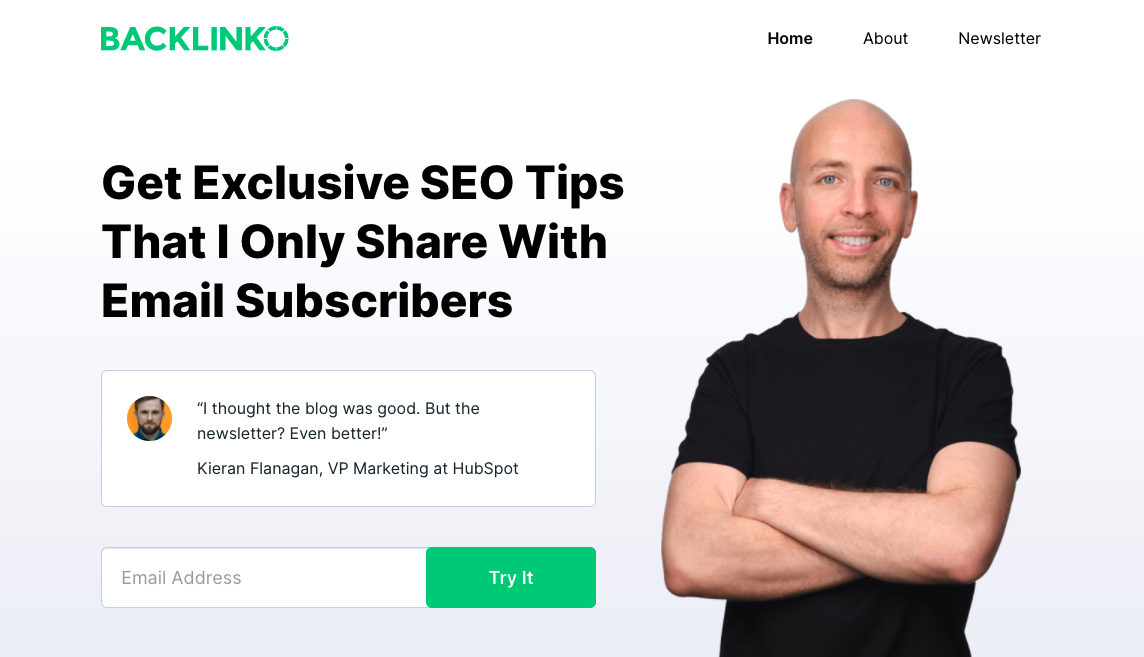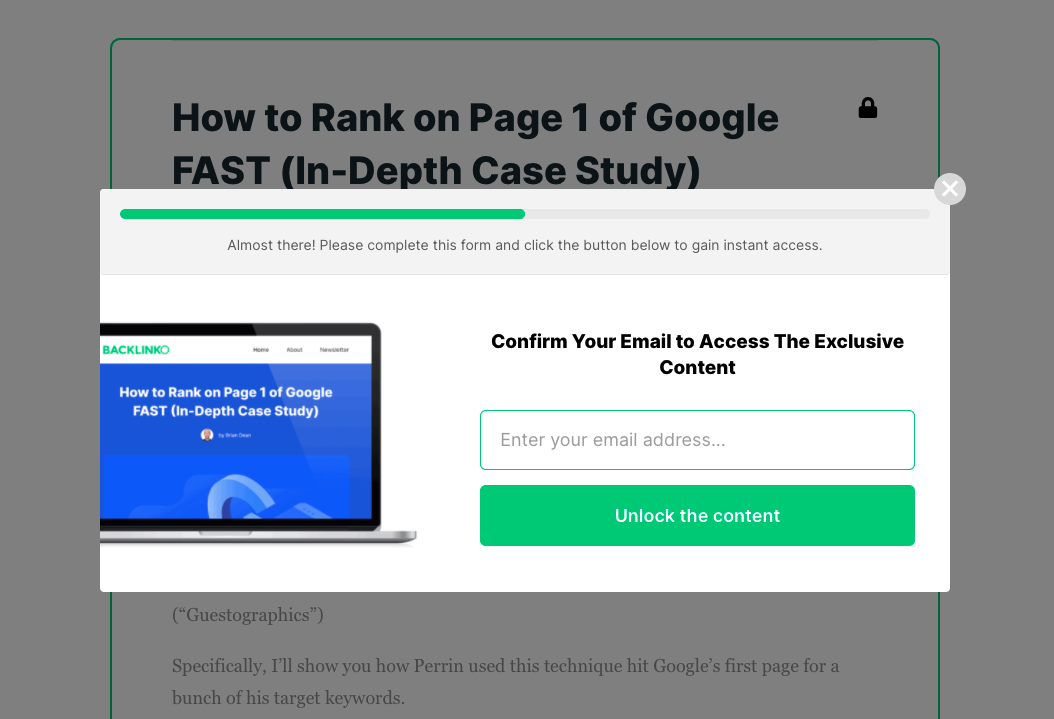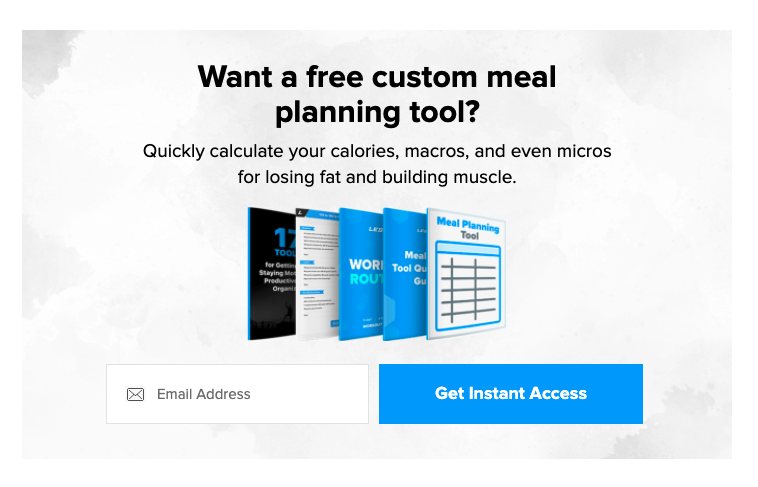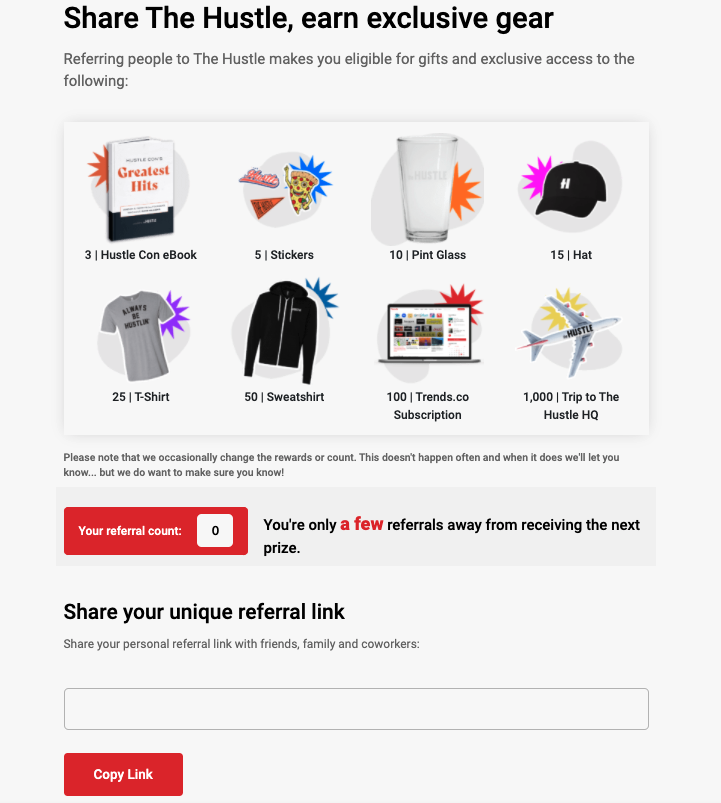Email marketing isn’t dead—far from it. Google+: now that’s dead.
While social media platforms have come and gone, and channels like cable TV and radio have ebbed and flowed, email has remained strong. Email is fast approaching its 60th birthday, and it’s not showing any signs of slowing down.
But it’s easy to see why so many people believe it is, sending mass emails with little to no response.
If this sounds like you, I’ve got good and bad news. Email marketing isn’t dead, but your approach to it is.
The best part about email marketing is that you’re never too late to the game. While there’s a constant battle for top SEO rankings, and you’re likely too late to win big on Google stock, there’s never a bad time to start building an email list.
If you’re looking for a budget-friendly marketing tool, look no further. With a 3,800% ROI, email sits as the king of online revenue. It costs less than pennies to send an email, and each one has the potential to return hundreds or thousands of dollars in revenue.
However, an email marketing program is only as strong as its list—and building a top-notch email list is easier said than done. It takes time and resources, but it’s worth the effort.
This guide will show you everything you need to know to build an email list from scratch—no buying, renting, scraping, or any of that non-compliant nonsense. We’ll show you tried-and-true methods for not only growing a list but (more importantly) maintaining it.
Table of Contents
Do You Know the Value of Your Email List?
6 Must-Follow Best Practices for Email List Building
How to Build an Email List Step-by-Step
How to Maintain Your Email List
Do You Know the Value of Your Email List?
If you’ve spent any time on LinkedIn or kept an eye on some of the most popular social media content creators, chances are you will have seen them plugging their newsletter.
It’s completely free, it provides unique insights you won’t see anywhere else, and from the outside, it seems like a lot of hassle to get people to join your email without charging them for the privilege.
So, why all the hoopla about email lists? We’re glad you asked.
Why all the hoopla about email lists? We’re glad you asked.
Your email list is possibly your most valuable marketing asset. It has the potential to lead to more revenue, ROI, engagement, and retention than your content marketing program or massive social media following.
And it’s all yours. What do we mean by that?
Well, at any moment, Twitter could delete your profile, or Instagram could freeze your account. All the hard work you’ve spent building a following on these platforms could be lost in the blink of an eye.
The same goes for your organic search traffic. Google can update its algorithms (and frequently does), and your site could lose its rankings overnight.
However, you own your email list. The individuals on your list have (hopefully) opted in to receive your messages, and you retain access to those email addresses until your subscribers revoke it.
Plus, there’s so much you can do with an email list. Think about everything you can do with email marketing campaigns and automation:
- Send timely promotional emails
- Follow-up with shoppers using abandoned cart messages
- Nurture and retain customers along their journey or onboarding experience
- Keep customers engaged with your brand on a day-to-day or week-to-week basis
- Provide need-to-know information as quickly as possible
6 Must-Follow Best Practices for Email List Building
There’s a right way and a wrong way to grow your email list. Do it the right way, and you’ll build a valuable, engaged following. Do it the wrong way, and you’ll end up with a list as useless as a bunch of fake social media followers.
Below, we’ve outlined a few must-follow best practices for building your email list. Follow these rules to the letter, and you’ll thank us later—trust us.
1. Build—Never Buy
Never purchase or rent an email list. Email is different from most forms of communication. Unlike TV commercials or social media ads, users opt-in to your emails. They choose to receive your messages—you don’t just pay to put it in front of them.
Plus, it’s in your best interest to build a homegrown list from the ground up. Recipients who don’t opt-in to receive your emails likely won’t open them, or worse—they’ll mark them as spam. If you get too many spam complaints or end up on block lists, your email service provider (ESP) might shut your account down. Inbox providers will also take notice, and they’ll likely stop delivering messages to your subscribers’ inboxes—even the ones who did opt-in to receive your messages.
It can be tempting to think that sending your email to 100,000 generic leads will result in better performance than sending to 1,000 organically collected leads, but you would be mistaken.
With a smaller, significantly more engaged list of recipients who will not only open your email, but are actively waiting to receive it, you have much more opportunity of getting them to follow your call to action.
2. Add Value
Don’t just beg people to join your email list. Give people a reason to sign up and stick around. You might succeed at first, but when they realize your content lacks value, don’t expect them to stick around!
Your email program should provide value to your recipients. That value can take various forms:
- Exclusive discounts and promotions
- Timely news and information
- Regular notices to keep users up to date
- Roundups of the latest and greatest content
- First-come, first-serve opportunities
- Downloadables and freebies
Email is all about give and take. Provide value to your visitors, and they’ll subscribe. Continue to fulfill your promises, and subscribers will turn into customers. Do that over a long time, and you’ll transform customers into lifelong ambassadors.
3. Set Expectations From the Get-Go
Let your subscribers know what they’re getting into before they subscribe. Don’t just add an email signup form to your site—set expectations for your subscribers.
What kinds of emails will you be sending them? How often should they expect these messages? Will they have the ability to adjust the message types and frequency later?
By managing expectations, you won’t be pestering them, annoying them, or leaving them wondering when your next communication will appear.
Imagine visiting a retail shop, and an employee comes up and asks for your phone number. You have no idea why they’re asking, and you’re a bit confused. Eventually, they tell you they’re entering all in-store customers that day into a free raffle for a $100 gift card—of course, at that point, you give them your number.
Give your customers all the information they need to know to feel comfortable subscribing.
4. Maintain Brand Consistency
Don’t just add an email program because you think you should, rushing it and avoiding important brand details. Your email program is an extension of your brand. It should have the same style, voice, and standards as your website and social media profiles.
This task isn’t something you hand off to your brand-new intern. No, your email list is something you treasure and treat with intention. In many instances, it will become the lifeblood of your business, so treat it with the respect it deserves.
Take time to build email templates that let your brand shine. Add relevant logos and taglines to ensure they align with your other messaging. When users click from your email to your website, it should be a seamless experience.
5. Respect Your Recipients
Give them what they asked for—nothing more, nothing less.
If your subscribers signed up for a newsletter, don’t send them product announcements. If they signed up for shipping notifications, don’t send them promotional emails.
Deliver on your promises. If you committed to sending 1 email a week, don’t ramp things up and double or triple your frequency just to try and hit your end-of-year revenue targets.
Respect your recipients, and they’ll stick with you for the long haul.
6. Always (Always) Enable Double Opt-in
Double opt-ins might hurt your signup rates, but it ensures you’re only getting clean, legit email addresses. Sure, it can be a pain for a customer to have to visit their inbox to confirm their subscription—however, you’ll be guaranteed they really meant to subscribe.
Double opt-in: always enable it.
Remember, having a smaller list of hardcore followers is much more profitable than a large list of people who aren’t interested.
Don’t Skip: How to Write a Sales Email That Converts
How to Build an Email List Step-by-Step
Step 1: Share-Worthy Content
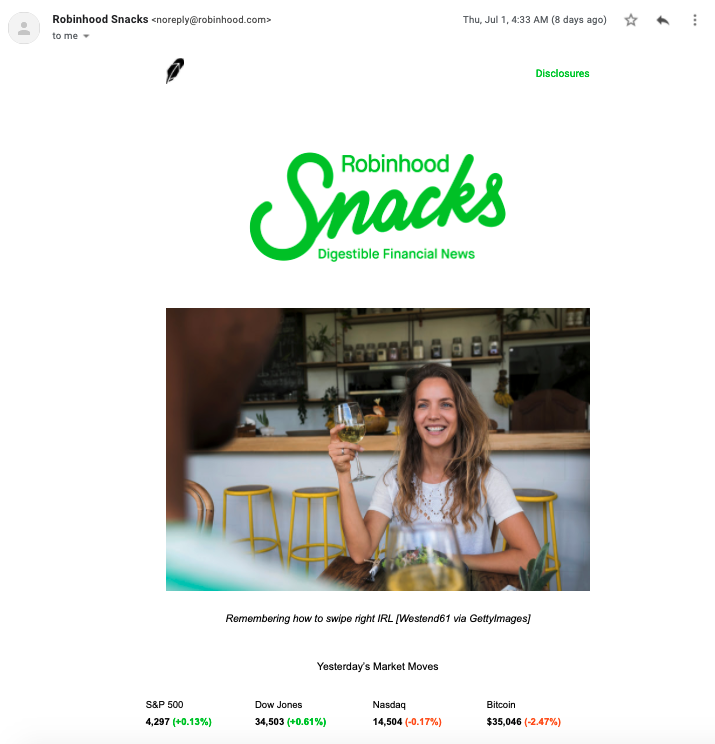
When you create compelling content, you don’t have to beg customers to subscribe—they’ll do it all on their own. Think of what unique value you can provide to your audience.
What would make them want to share your emails with their friends? What would keep from ever unsubscribing? Finding the answer to these questions is easier said than done, but it’s well worth the brainstorm.
Brands like The Hustle (which sends 5-minute-long emails every morning with the latest and greatest news) and Robinhood Snacks (which sends daily financial and stock updates) have nailed this concept.
If you want inspiration, check out their email newsletters.
Step 2: Homepage Signup Box
Want more subscribers to your email list? Make it a priority. Put your signup form front and center on your homepage.
Think about it. When a person visits your site, they’re going to consume what they want and exit. You need a way to keep in touch with them after they leave.
Experiment with putting a signup form on your homepage and watch the new subscribers start rolling in.
Where possible, you could also play around with newsletter opt-in discounts, such as 10% off your first order if you opt-in. This type of behavior is commonplace in retail, with big brands such as Nike, Reebok, or Adidas.
Step 3: Page-Specific Add-Ons
Have an article that’s doing exceptionally well? Offer additional free content on the page in exchange for your reader’s email address.
For example, if you have a listicle of the 20 Best SEO Tips of 2024, you might offer 5 secret tips for those who subscribe. Or you could offer an infographic with illustrations and more information.
By adding additional content behind the opt-in wall, you incentivize sign-ups for your most passionate followers and add an element of exclusivity, playing into the psychology of feeling like we are getting more than someone else.
Step 4: Exclusive Content
As content creators, we give a lot of information out for free. There’s nothing wrong with that, but if you have an audience who’s hungry for more, ask for their email address.
Don’t worry—your audience can go and read something else if they’re unwilling to give up their email address. However, those who’ve consumed your other content will likely be willing to subscribe to get exclusive access.
Just remember: you need to deliver. If you require someone to enter an email address to unlock content, it better be a super good piece.
You only get one shot at converting someone in this format. If the content doesn’t match the requirements to access it, don’t expect them to stick around or re-register in the future.
Step 5: Guides, Whitepapers, and Calculators
You’ve seen this tactic used for decades. Repurpose your existing content and bundle it into a guide or whitepaper that you can offer to your audience in exchange for their email.
Or consider writing an ebook. Ebooks are basically just really long blog posts—they don’t need to be anything fancy. However, your audience will likely place greater weight on the word “ebook” than “long blog post.”
Step 6: Exit Intent Pop-Ups and Slide-Ins
If you just rolled your eyes when you read “pop-ups and slide-ins,” we’re right there with you. These signup forms can be a huge nuisance—when misused, that is.
Bombarding your visitors with pop-up signup forms as soon as the page loads makes for a lousy user experience. However, waiting for your user to read 75% of the content before triggering a pop-up or slide-in (offering additional content relevant to what they’re reading) makes for a great user experience. Or if they’re in the shopping cart and going to exit the page, you can provide a discount to keep them on the buying path.
Used correctly, these methods can get your signup forms in front of more eyeballs without peeving anyone off.
Privvy is a cheap, easy-to-use tool for embedding various signup forms on your website.
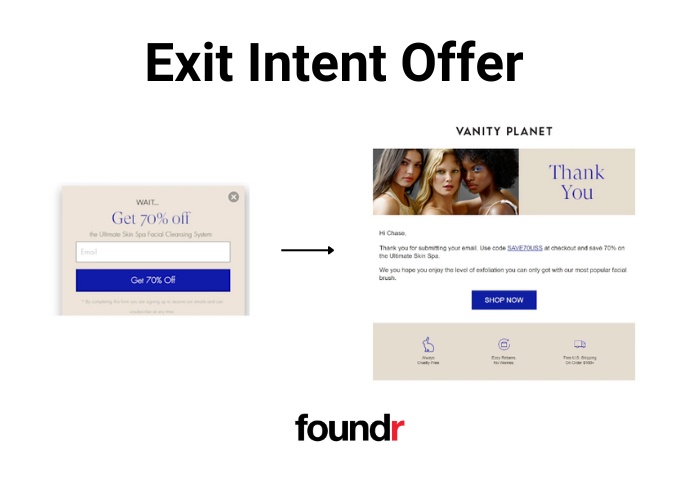
Step 7: Social Media Pitch
Convert your existing social media following into email subscribers. Include links to your email list signup form in your bio sections and social posts. Make it easy for your customers to follow you on every channel.
Most ESPs even offer integrations for you to embed your email signup form straight onto your Facebook page, making it easier than ever for your followers to convert into subscribers.
As mentioned, it’s a good idea to try and convert social followers into email sign-ups, in case your account is ever deleted, banned, or hacked into.
Step 8: Referral Program
A kick-butt referral program can grow your email list at lightning speed. Once you’ve set it up (correctly), you can sit back and let your audience do the list-building for you.
The Hustle offers a strong referral program that grants users swag and even a VIP trip for referring new members to their email list. With just 15 referrals, you get a free hat. Get up to 1,000 referrals, and The Hustle will fly you out to their HQ. This strategy is one of the ways The Hustle grew an email list of 1.5 million subscribers.
Check out Vyper.io if you want a tool to help you implement this strategy.
Keep Learning: Learn How to Use Email Split Testing Like a Scientist
How to Maintain Your Email List
Gaining a new subscriber to your email list is just the first step—now, you need to keep them.
An email list isn’t a set-it-and-forget-it asset. Your list will grow and shrink over time. Engagement will ebb and flow, and you’ll have to clean your list periodically.
A lot goes into maintaining a top-notch email list, but the hassle is worth the reward. Remember, your email list is one of your most valuable marketing assets. Take care of it.
Here’s how to maintain your email list:
Check Your Analytics Frequently
You’ll want to keep an eye on a few KPIs. Here’s what they mean and why you should check them regularly:
Delivered: Delivered means that the inbox provider has received and accepted your mail. This doesn’t necessarily mean the email landed in the inbox—it still might have ended up in the spam folder. A low delivery rate usually means subscribers aren’t engaging with your emails. You need to clean your list to ensure engaged subscribers keep receiving your messages.
Opens: Your recipient opens your email. Once your message is delivered to the inbox, you must rely on your subject line, preheader text, and sender identity to get your email opened.
Clicks: After opening an email, your recipient clicks any link. This is the action you ultimately want your subscribers to take. You want them to click to register an account, view an article, or purchase a product.
Unsubscribes: A recipient asks to be removed from your email list. Unsubscribes aren’t always a bad thing. User preferences change, and sometimes they’d like to stop receiving certain messages. However, high unsubscribe rates could mean you’re sending too many messages, or they’re not segmented enough to be relevant to each recipient.
Spam Reports: A recipient flags your email as spam. You want to avoid this action at all costs. Spam reports hurt your sender reputation and decrease the chances your messages will get delivered in the future. If you send an email to a recipient who hasn’t opted into your messages or doesn’t recognize your brand, they’ll probably mark your message as spam. Most recipients will attempt to unsubscribe first, so make it as easy to unsubscribe as possible—if you don’t, they’ll click the “mark as spam” button instead.
Remove Unengaged Subscribers
Yes, you heard us. We know it’s not easy, but your unengaged subscribers are hurting your list. If recipients aren’t opening your messages, they’re hurting your delivery rates—and they’re not doing you much good anyway.
You might hold out hope that, much like your ex-partner, they may one day come back into your life and start communicating with you.
I’m afraid that isn’t going to happen (for your email followers, of course. I don’t know nearly enough about your prior relationships to make that assumption).
Make it a habit to regularly remove unengaged subscribers from your email list. This process is known as email scrubbing.
Before removing subscribers, consider running a re-engagement campaign. This campaign is intended to give your recipients one last chance to open your email, show their interest, and continue engaging with your messages.
If they engage, keep them on your primary list—if they don’t, stop messaging them.
Segment Your Email List
The best way to keep your subscribers engaged is by sending them relevant content. The more relevant you can make your emails, the more engaging they’ll be—you achieve this through segmentation and personalization.
You can segment your list with hundreds of different data points, but the complexity of it all depends on your data-gathering tools and offering variance. For example, if you only sell budget-friendly toddler shoes for little girls, you won’t need to do much segmenting. However, if you sell outdoor apparel for all sports, ages, and genders, you’re going to need to get a lot more specific with your segmentation.
Here are examples of tags and segments for your email list:
- Purchased a product
- Added to cart
- Downloaded ebook
- Uses Gmail
- Based in New York
Here’s a visual example of how you might segment your audience based on purchase history.

Ready to Put Your Email List to Work?
What’s an email list without a purpose? Not much.
Start an ecommerce store to start monetizing your subscribers. We’ll show you how.
Join our free masterclass to learn how to launch a profitable online store in 12 weeks or less. Gretta Van Riel will walk you step-by-step through the copy and paste formula she’s used to start and scale 4 different multi-million-dollar businesses.
Gretta will show you how to put your email list to work to launch sales-guaranteed emails and high-conversion abandoned cart campaigns. Join now to learn how to bring your ecommerce business to life.
—
This article was updated with support from Graeme Whiles.
The post How to Build an Email List From the Ground Up (The Right Way) appeared first on Foundr.
